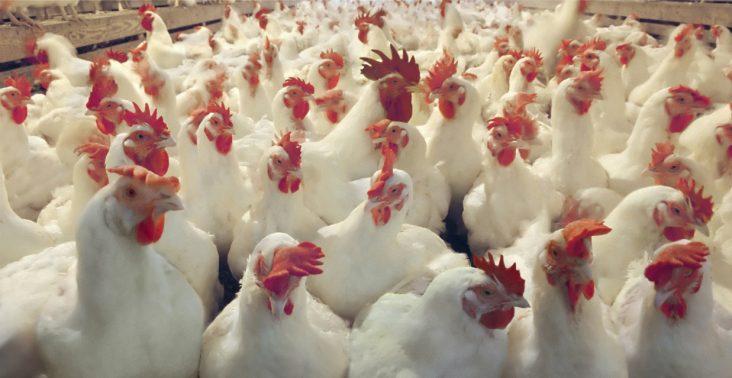Researchers probe the stress pathways in chickens; could have human impacts at some point
by October 23, 2018 7:40 pm 646 views

Stress can impact the quality of chicken meat before the animal is processed, and scientists are now studying physiological stressors. Avian neuroscientists at the University of Arkansas System Division of Agriculture probing the neural pathways for stress response have identified a new structure of neurons in the poultry brain.
Wayne Kuenzel, a Division of Agriculture poultry physiologist specializing in avian neuroendocrinology, said the newly discovered structure is a cluster of neurons that may be the starting point for some stress response signals. They are located in the hippocampal commissure, a structure located in the septum, a brain region directly above the hypothalamus.
Neuroendocrinology is the branch of biology that studies the interactions between the nervous system and the endocrine system, Kuenzel said. It is the system by which the brain regulates hormonal activity in the body, including response to stress.
Gurueswar Nagarajan, a former Ph.D. student in Kuenzel’s lab, led the investigation that demonstrated the new structure, called the nucleus of the hippocampal commissure, was the first neuroendocrine nucleus involved in stress response.
Nagarajan is now a post-doctoral researcher for the National Institutes of Health in Bethesda, Maryland.
Poultry, like many food animals, can be subject to stress at different stages of agricultural production, Kuenzel said. One common example of poultry stress is transportation as chickens are moved from hatcheries to poultry production houses and then to food processing plants.
Stress causes physiological changes in the birds that can have negative effects on meat quality, Kuenzel said.
A better understanding of stress response pathways could help discover ways to alleviate such physiological stressors, Kuenzel said. That would help improve poultry welfare, health and may lead to improved meat quality for the poultry industry.
The current understanding of stress response is that it begins in the hypothalamus, an area at the base of the brain, directly above the pituitary gland. The hypothalamus contains a number of small clusters of neurons called neural nuclei that have a variety of functions, Kuenzel said. One of its most important functions is to link the nervous system to the endocrine system via the pituitary gland. The system is designed to maintain homeostasis — a tendency toward equilibrium among a body’s systems throughout the lifetime of animals, including humans.
In response to stress, the hypothalamus releases corticotropin-releasing hormone, or CRH, that stimulates the anterior pituitary gland, located just beneath the brain, to secrete a hormone called ACTH. It travels via the bloodstream to the adrenal glands, located atop the kidneys, which are then stimulated to secrete corticosterones. These are stress hormones in poultry and other birds that adjust metabolism in a manner that allows the birds to cope with stress.
Nagarajan showed that the nucleus of the hippocampal commissure — NHpC in scientific shorthand — became active and produced CRH in chickens that were stressed by short-term restriction of food.
The NHpC neurons responded prior to the major group of CRH neurons in the HPA axis, and Nagarajan believes the newly discovered cluster of neurons may be part of the classical HPA chain of neuroendocrine activity that triggers the birds’ stress response.
Subsequent investigation by Nagarajan and Kuenzel’s current research team support that early hypothesis.
Research to understand the complexities of the neuroendocrine systems builds a base of knowledge upon which later scientist will be able to develop remedies to chronic stress responses, Kang said.
“Basic research like this is the foundation for applied research that leads to new technologies that can improve commercial poultry health and well being,” Kang said.
Kuenzel added that, because avian neuroendocrine systems are analogous to human neuroendocrinology, medical researchers may be able to apply his team’s avian research to help guide them to a better understanding of human stress responses.
Chickens or broilers are a major agriculture sector. In 2017, 9 billion broilers, weighing 55 billion pounds, were processed in the U.S., according to the National Chicken Council.
The combined value of production from broilers, eggs, turkeys, and the value of sales from chickens in 2017 was $42.7 billion, up 10% from $38.7 billion in 2016, according to the United States Department of Agriculture. Of the combined total, 71% was from broilers, 18% from eggs, 11% from turkeys, and less than 1% from chickens. The value of broilers produced during 2017 was $30.2 billion, up 17% from 2016.
